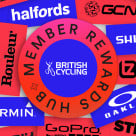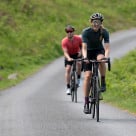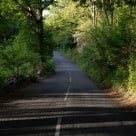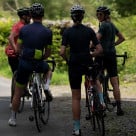
MULE CC
West Midlands''
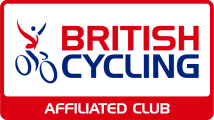

Club Information
Club type: Club Racing
Affiliated: 31/12/2025
Affilation status: Active
Total club members: 41
- Club Sponsors:
- mule
About our club
Mule Rules & E*que,e
Welcome to Mule Cycle Club!
We are a relaxed and inclusive club and we want all riders to enjoy our group rides, whether they are ‘social no drop rides’ or more ‘energetic’ rides.
All riders ride at their own risk, but following these simple rules and following basic cycling etquete will create the safest possible environment for everybody.
These rules are pulled from long-standing practices in cycling and will be familiar to all experienced riders, and so they are presented here for new members who have never ridden in a group, but we would like all members to make a point of reading and following them.
As well as these Mule Rules always remember the highway code, and rules of the road at all times, you are responsible for your own safety so ensure your bike is road-worthy and you’re confident riding on open roads. We recommend you wear a helmet for your own safety and wellbeing.
If you are not sure about any of these rules or the etquete for a group ride please feel free to speak to one of the more experienced club members and they will be happy to help. Following these simple rules will dras?cally reduce the chance of accidents or incidents during group rides.
Mule groups consist of A, B and C groups, we try and cycle the same routes if possible, perhaps with some easier diversions for the C group if it is a particularly hilly route of a 1000m/3000Q or more, we publish the routes beforehand on Strava for people who wish to download the route to their cycle computers. The A group tends to be racing snakes and ride at about 32+ kph/20+ mph, B group riders tend to ride at about 28 kph/18 mph and C groups tend to be people just starting out or who want a more relaxed social ride at slower speeds. The above speeds are estimated average speeds.
Warning Calls or signals
These calls tend to be universal to all cyclists – please use them at the appropriate ?mes. Most of the ?me these calls or signals will need to be passed up or down the chain of riders, do not assume that just because you have heard or seen a signal from a rider in front or behind that the rest of the group has.
• “Car up” or “Car front” There is a vehicle approaching from the front of the group.
• “Car back” There is a vehicle coming from behind the group.
• “Single out” this is usually used by riders at the back of a group when a vehicle is unable to
pass the group riding two abreast safely, this should be relayed forward within the group, and outside riders should drop back behind inside riders, obviously, if you are an inside rider you may have to make space for the outside rider in front to drop back and in to a space in front of you.
• “Clear” or “Not Clear” These calls let riders behind know whether it safe to proceed across a junc?on, if the group cannot stay together the first ones across must ride slowly un?l the others catch up, and not use it as an opportunity to smash it and create a breakaway, James Im talking about you...
• “Hole” Any pothole that could cause a rider to fall. If possible you should also indicate where it is by poin?ng at it as you pass, either on the leQ or right but only take your hand
MUle CC v 1.1
off the bars to point if it is safe for you to do so, sometimes people will just point without
calling out “Hole”
• “Gravel” this call should be used if there is loose gravel on the road which may be a hazard
to following riders, especially on corners, sometimes there is an accompanying hand signal with the hand held down and the open hand-shaken to signify a loose surface, it could be mud or ice or any surface which could lead to a rider losing control. Only use a hand signal if it is safe for you to take a hand off the bars.
• For hazards on the leQ, usually a parked car or pedestrian a common hand signal is to put your left hand behind your back, pointing to the right, away from the hazard. Try and give as much room to pedestrians as possible, it can be in?mida?ng having a group of cyclists riding towards you at full chat! sometimes you will hear “On the Left/Right” This is a general warning of some kind of hazard ahead
• “Stopping” or “Slowing” or a hand signal of the right hand moving in an up and down action” means you are slowing down or stopping, and gives people behind the chance to brake without running into the back of you, especially if they are intent on sucking your wheel at the time. You know who you are...
• “Puncture” Let the other group members know and they will wait while you repair it, people will probably help, unless you are riding a tubeless set up and then amazingly people will find some essential maintenance that they need to do on their bikes
• “Horse” Extra care is needed when passing horses as they can be easily spooked by bikes, give them as much room as possible, and perhaps try and keep the pedals turning gently so that noisy free hubs do not frighten the horses, make sure that both the horse and rider are aware of your presence and pay atention to any request by the horse rider – they know the temperament of the horse and its likely reaction to a group of cyclists.
Group cycling e*que,e
• Don’t surge: Ride steadily and try to keep a steady line and constant speed while in a group. If you surge forwards when at the front of the group the effect is magnified at the back of the group, and by the time riders at the back of the group no?ce a gap opening up they have to increase their power output to close the gap, and by the end of a long ride they will be demoralized and exhausted.
• Share the load: It is good etiquette for riders of similar ability to ‘take their turn’ at the front of the group. The riders at the front of a group create a ‘pocket’ of air behind them which allows riders following to use the ‘slipstream’ and so use less power to ride at the same speed as the riders in front, typically it is 30% less power for the same speed. Obviously if Dave Scott is in your group it is fair game to sit on his wheel for as long as you possibly can!
• Alternate the lead safely: Ensure there is an agreed method to alternate who is riding at the front, If in single file, the front rider, aQer their ?me at the front, can pull out to the right, aQer checking it is safe to do so, and then reduce their speed un?l they drop back to the rear of the group, as the last person approaches the dropping back rider, they should shout “Last man/woman” this allows the rider dropping back to increase their speed slightly to drop in behind the last rider without losing the wheel of the last rider and therefore the group. If riding two abreast the front right or outside rider can start to slow a liEle allowing the front leQ or inside rider to get ahead and then move across to the front right posi?on, this allows the person in second wheel on the leQ to move up to front leQ posi?on, this way the whole group rotates like a revolving wheel, ensuring everybody shares the load. Do not freewheel or surge as you get to the front, maintain a steady speed that everybody can follow. These are just two methods of alterna?ng the lead and others may be explained while riding as a group.
MUle CC v 1.1
• Shout “Off” if you find yourself dropping off the back of the group, and the other riders will adjust their pace to ensure you can keep up, if you hear somebody shout “off” ensure you pass this up the line as it can be difficult for the riders at the front of the group to hear a shout from the back of a group.
• Racing.: Racing does not really have its place on an organised club run, You may be the best rider the Tour de France has never seen... but it will not be appreciated if you sit at the back of the group sheltering from the wind the whole ride only to race to the front at every town sign... But we understand that it can be fun to have some light hearted sprints now and again, but those doing so must ensure it is safe to do so and that it does not disrupt the rest of the group, following any ‘sprints’ the people involved should return to the group or wait at the next junc?on. Obviously people will also go up hill at different speeds, and some people will want to beat their PR’s on par?cular climbs, but the group should aim to regroup either at the top or as soon as possible, this can be done by the faster riders slowing down at the top un?l the group catches up, or stopping and wai?ng for the rest of the group. Generally you should not try not to overtake the rider/riders at the head of the group. If you have to, then do not push your way back into your original posi?on but rejoin at the back of the group as soon as possible, or if you have that much energy perhaps have a longer s?nt at the front to give the rest of the group a break.
• Ride two abreast where it as safe to do so but always be prepared to single out when necessary. Never ride three abreast.
• Don’t ‘Half Wheel’ You should ride immediately behind the rider in front – do not overlap your front wheel with the rider in fronts rear wheel, if they have to swerve to avoid a pot hole or hazard unexpectedly it gives you no chance to avoid them and can result in both of you crashing, and probably bringing down the riders behind as well, it can seriously strain friendships when your carbon pride and joy scrapes up the road due to somebody half wheeling you.
• Always pass on the right (In the UK) do not try and pass a rider on their inside, people are not expec?ng somebody to pass on their inside and if they swerve it can bring both riders off. If you need to come up the inside of a rider shout “Inside” to alert them to your presence on their leQ.
• When approaching a hill an?cipate the gradient and change gear in good ?me. Missing a gear change on the steep bit can bring you to a sudden halt which can have a knock on effect for riders behind, who have to slow, losing momentum and possibly crashing in to the back of you.
• Treat members of the group and other road users with courtesy, Acknowledge with a wave courteous behaviour by other road users. It is best not to wave through a following vehicle that is wai?ng to overtake, it is generally best to let the driver make this decision and it avoids you being held responsible if there is an accident due to you waving someone through.
• Do not react to bad driving incidents with gestures or provoke retalia?on, they may be idiots, but it is generally best to ignore them, plus it is a nightmare figh?ng in road cleats on a slippery road...
• Ride with the group which matches your ability. It is usually beEer to start in the lower group un?l you are confident you can keep up with the faster group, If in doubt ask an experienced club member and they will be able to give you an idea of the pace of each group. It is considered bad form to hold back a strong group when an easier group is available. If the group you have chosen is con?nuously wai?ng for you, consider dropping back to a slower group un?l your fitness has improved. Let others know if you are unable to keep up, have a problem or have decided to leave the group and always pass the instruc?ons along. if a rider cannot keep up, the leader needs to know.
MUle CC v 1.1
Tips for new cyclists or members
• If you are not used to regular exercise or are not sure about your health and ability to cycle please consult your doctor before star?ng. Cycling, especially in a group, can push you physically so it might be worth trying a few rides of varying distances alone before coming along on a Mule ride.
• Don’t try to push yourself too hard to keep up, par?cularly on the hills. try and ride at your own pace, in a low gear, the group will wait at the top or the next junc?on. Carry some money, a phone and drinks and food, even on short rides. If you have problems or decide to leave the group then please inform fellow group members, otherwise they will be wai?ng for you or may even come back looking for you.
• Wear cycle-specific clothing if possible as it provides a good level of comfort and prac?cality. Carry a waterproof jacket, not only for the rain but also to give an extra layer if you have to stop with a puncture and cool down. The Mule shop has a full range of cycle specific clothing, including par?cularly fantas?c looking Mule Cafe Racer branded tops.
• Carry enough tools to fix basic problems, such as punctures or nuts or bolts coming loose. Carrying an inner tube is quicker and easier than repairing a puncture at the boEom of Blodwell bank in the rain when the rest of the group is keen to get back for a coffee! Carry at least one spare inner tube, tyre levers, a pump and a mul?tool as the minimum. A puncture repair kit will also be needed in case you get more than 1 puncture, and ready glued patches are a quick and easy fix if you have already used your spare tube.
• Helmets are recommended on all Mule rides.
• Mudguards are recommended for winter rides, and can prevent spray being thrown all over
the people behind and compromising their vision.
• Keep your bike well maintained, whilst most people are happy to help if you have a
mechanical issue, pa?ence grows thin if you are constantly having problems, take the
opportunity of checking your bike when cleaning and aQer each ride.
• Tri-bars are not permiEed on Mule rides for safety reasons, if somebody has their hands/ arms on tri bars, it can take much longer to move them to the brakes and so stop in an
emergency.
• Please do not be in?midated when arriving at the mee?ng point, the Mule Cafe Racer shop,
come in 20 mins early and order a coffee? and please introduce yourself to one of the staff members or one of the riders lurking near the heater, we are friendlier than we look and will be happy to chat and help you make a choice on the best group for you to ride in.
We look forward to seeing you on one of our club rides and for a coffee soon! Mule CC
How to join our club
This club has not yet setup online purchasing of club membership subscriptions.
We are open to
| Adults (Aged 18+) |
| Intermediate riders |
| Advanced riders |
When we train
| Day | Time | Traffic Free |
|---|





